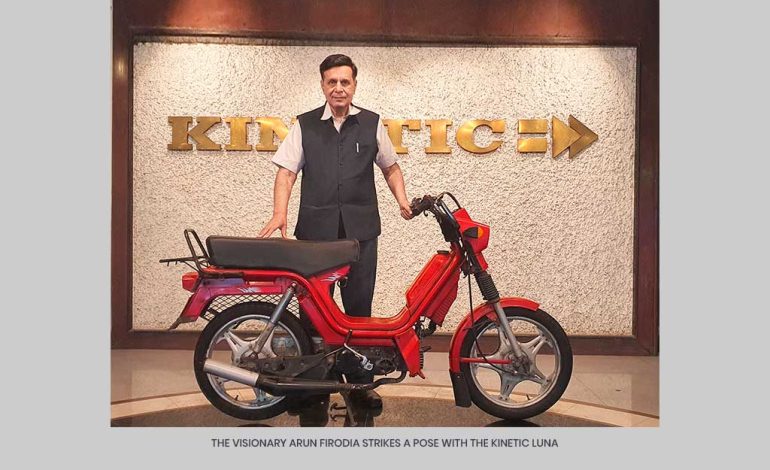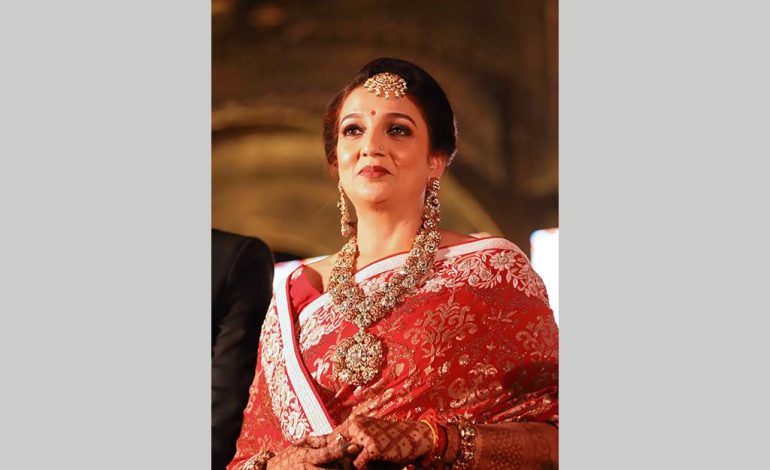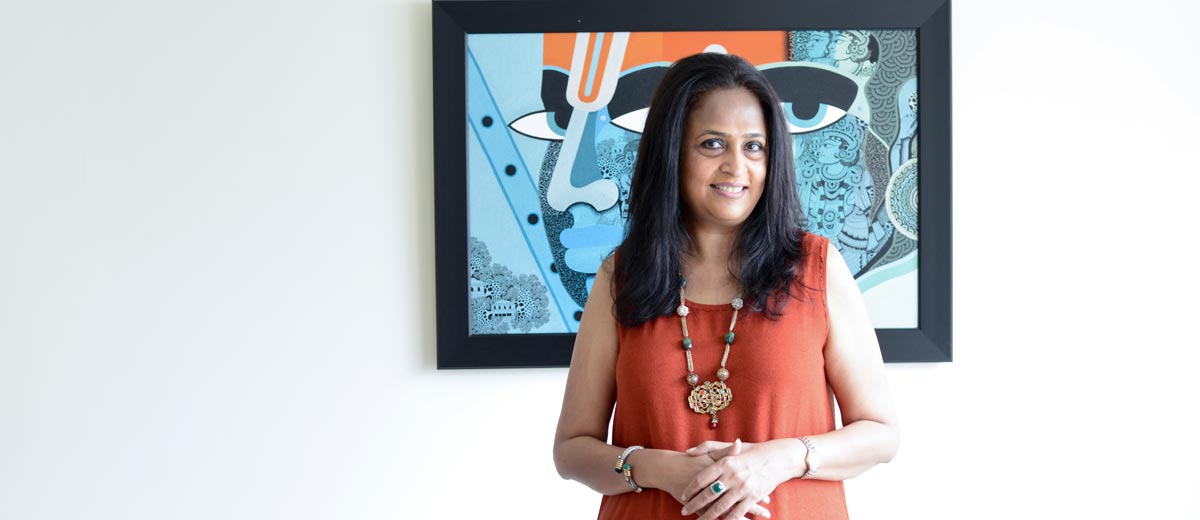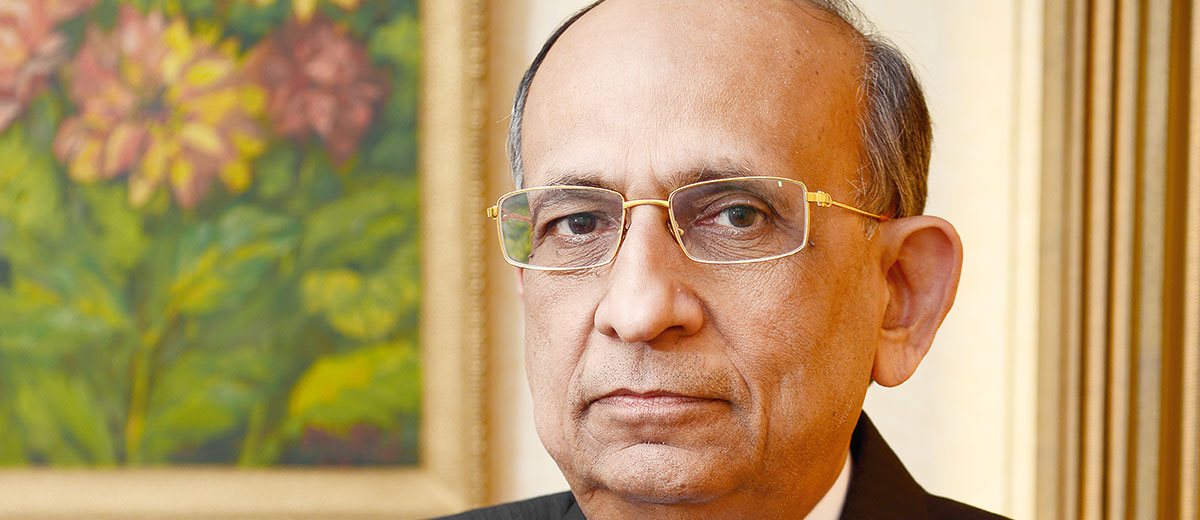
Riding In Top Gear
This is the story of a legendary father and his son from the Indian automotive manufacturing company that was launched with the vision to provide affordable transportation in India. Presenting Arun Firodia, who serves as the Chairman of Firodia Group of companies, the leading manufacturer and exporter of two-wheelers in India with an annual turnover of $500 million! A pioneer in putting affordable mobility within the reach of the Indian population, he brought convenience and refinement to scootering by giving a modernday shape, scale and scope to the Indian twowheeler industry. His son Ajinkya Firodia, MD of Kinetic Engineering Limited, the flagship company, has added a new twist to the automotive industry with a business acumen and perspective that will have you in awe
Beginning of a journey
The Kinetic Group was founded in 1972 by Shri HK Firodia, also called the ‘Doyen of Automobile Industry’ and God’s own man. His son Arun Hastimal Firodia obtained B.Tech with distinction in Electrical Engineering from IIT Mumbai in 1965, before heading to the United States to complete his MS from MIT and MBA from Sloan School of Management. He joined his father’s automotive manufacturing company as the second generation entrepreneur. Its flagship company, Kinetic Engineering Limited, began its journey in 1974 with the launch of India’s first moped Kinetic Luna, a groundbreaking vehicle that became an instant hit as ‘Chal Meri Luna’. “This was our idea of ‘Service to the Nation’ which surely was a precursor to Atmanirbhar Bharat as it was a 100 per cent locally made vehicle for India. From manufacturing Luna to creating world records with the Kinetic Honda, Kinetic Engineering never stopped innovating timeless products to contribute to its legacy,” says Arun Firodia, Chairman, Kinetic Group.
With a career spanning almost 40 years, Arun Firodia is widely acknowledged as a visionary and technocrat. A highly qualified professional, he was conferred with the MIT Alumnus Award for his distinguished contribution to the Indian industry, academia and society in 2007. In 2012, he was conferred the Padma Shri, the fourth highest civilian award of India, in the trade and industry category. Arun Firodia is married to Jayshree Firodia, who serves as the Director of Kinetic Engineering Limited. They have a son Ajinkya Firodia, who has been appointed as the Managing Director; and three daughters Sulajja Firodia, the Joint Managing Director; Vismaya Firodia, the Vice President before she ventured into a start-up of her own; and Kimaya Firodia Kelkar who made her own niche as a design professional abroad. Kinetic has its manufacturing unit in Ahmednagar spread over 70 acres with 800 employees, 32 manufacturing sheds and more than 400 machines. Today, Kinetic Engineering Limited has a reputation as the leading automotive manufacturer in India that is optimally striving its best to keep up with changing consumer preferences and increasing competition in the Indian automotive sector.
MARWAR speaks to Arun Firodia on Kinetic Group’s contribution to the industry over the last 50 years.
Kinetic Group has completed 50 years in the automotive industry. How do you feel about inheriting the legacy?
My father late Shri HK Firodia, a philanthropist with many initiatives to his crèdit, single-handedly laid the foundations of the now thriving Indian automobile industry, and left an illustrious legacy. My heart swells up with pride as I inherit this legacy and my life’s work has been of utmost importance to me. I have strived each day of my life to take forward the legacy of my father and my very brave mother and freedom fighter Pankuwar Firodia by contributing to this industry over the last 50 years. Among my successes were the moped Kinetic Luna and the advance scooter Kinetic Honda, that touched the lives of millions of Indians.
Your family has revolutionised the Indian automotive industry. Elaborate.
Our generation grew up with the groundbreaking products like Vespa scooter, Matador tempo, Luna and Kinetic created by my father—he was one of the founders of Indian industry in the post-independence era. ‘Come back to India. We want to make a moped’ wrote my father to me in 1969 while I was working in Boston, USA. ‘What is a moped?’ I asked him, ‘A vehicle for the common man’ was his cryptic reply. This is how the revolutionary product Kinetic Luna emerged as an idea to serve the nation, by harnessing technology for self-reliance. After that, there was no stopping us. We started participating in world famous Milan Fairs for two wheelers, got export orders around the world and continued to revolutionise the auto industry with the innovative products like Kinetic Luna and Honda.

Tell us about the journey of a company that pioneered affordable transportation in India.
My father always told me, ‘While doing business, do earn money, but please make positive difference in the life of Indians’. During the 70s, India was seeing social transformations and we wanted to make a small contribution. Cities were growing and so commuting on bicycles was difficult. That is when we thought to launch a low-cost vehicle for better mobility. Kinetic Luna and Kinetic Honda improved lives of millions, created employment for many and helped earn respect for Indian design and manufacturing. While Luna gave mobility to the common man, Kinetic Honda gave mobility to women. While the former invaded America, the latter made it to multiple Guinness Book of Records and celebrities were riding it.
What have been the strongest pillars of your success?
The major pillars of our success have been quality, reliability, out-of-the-book marketing ideas and making a difference. The idea was to make the moped affordable, lightweight and 100 per cent Indian. Once we achieved the criteria with our design and manufacturing, it was time for some marketing. We came up with a trilogy of Chal Meri Luna campaign where Luna was positioned as Safalta ki Sawari. We plugged the moped as a trophy to the ‘Man of the Match’ winner at key domestic cricket tournaments and to toppers of the SSC board examination in Maharashtra. Celebrated captain of the Indian cricket team, Kapil Dev became the brand ambassador for Kinetic.
How did Kinetic Engineering Limited focus on export business?
The innovations at Kinetic continued across the various models for the moped. As competition in two-wheelers increased and the market preference turned to motorcycles, we sold our two-wheeler business to the Pithampur Company, Kinetic Motor Company Limited, which in turn partnered with the Mahindras. However, the arrangement did not work for long and that was the exit of Kinetic from the two-wheeler industry. This is when Kinetic Engineering Limited decided to focus on the export business for supplying various parts to the USA, Mexico, Brazil, Chile, Sweden, etc.

KEL collaborated with globally acclaimed corporations to bring innovation to India. Comment.
Kinetic Group was built on the foundation of technology absorption of international partners and the ‘adopt and make in India’ plan. With this culture, I travelled across Japan, Korea, Taiwan, Italy, France and America to learn and bring these technologies in India. Our history and successes paved new opportunities for our Group. We were exploring auto and non-auto sectors, and needed technologies to supply to our main automobile businesses. The Sciaky tie-up was set up to make welding machines for factories, Taigene to supply motors for our scooters, and Hyundai to get into elevator (vertical transportation business).
What kind of challenges did your face over the years?
From innovation to manufacture to marketing of a product, there are hurdles in every step of the process. However, these hurdles also come with learnings. From the collaboration with Mahindra in 2009 to the change of our business model to auto components to serve a variety of industry, Kinetic has been through continuous transformation to stay innovative. Adapting to the needs and demands of the market is the key.
You are a combination of a brilliant engineer and astute businessman. Tell us more.
My father’s guidance motivated me to innovate by utilising my engineering skills. I nurtured my lifelong passion for science and technology. I have held a belief that scientific pursuit and achievement will propel India fast onto a development trajectory and help create a modern India where people can actualise their potential.

Who do you look upon as your inspiration in life?
My late father Shri HK Firodia is a true inspiration in my life. He was God’s own man and it’s rare to find a leader and a father like him. His principles of kasauti (excellence), hatoti (managing human relations) and sachoti (honesty) are timeless. I stand by his guidance and teachings even today.
Tell us about your leisure time.
My mind is constantly thinking about work and newer innovations so I barely spend time at leisure. I am blessed with four children followed by grandchildren, so I enjoy family life seeing them growing up, the hustle bustle, their friends coming home and also enjoy some time with my dear friends and well-wishers.
Ajinkya Firodia too shares his vision and role in the company.
Ajinkya Firodia joined the Kinetic Group in 2003 as the third generation entrepreneur with a mission to build a new business model focused on automotive systems. An integral part of the management team, his vision and role is to increase Kinetic’s presence worldwide and keep innovating new products.
You joined the company with plans of a model in automotive business. Elaborate.
I graduated with a double degree from Brown University in Economics and Engineering, and worked with JP Morgan in New York as a financial analyst. It was clear to me that I was training myself for taking forward the legacy for our automobile brand. I came at a time which was post the Honda departure and when we had just expanded into finance companies, motorcycles, 4-stroke scooters, etc. I was asked to start by understanding the importance of customer first hence I joined marketing, sales and service, which provided me an understanding that you cannot undermine the power of the customer. I have carried this learning with me for everything else in life.
How diverse is your product portfolio and the services offered?
We are a diversified group focused on auto, auto systems, electric, auto-electrical, vertical transportation, auto electronics, financial services and real estate. We are also focused on delivering transmission assemblies and axles, and driveline products across India to our export customers. We also specialise in electric vehicle (EV) foray and are devising products for this growing space.
Can you shed light on your vision for Kinetic?
My duty is to uphold and strive to enhance the glorious legacy created by my earlier generations, and to take it ahead before passing it on to the next generation.
How do you focus on brand building?
Kinetic Group has completed 50 years in 2021. In these 50 years, and more relevant for me in the past 20 years, we have been through transformation to stay relevant—from our entry into motorcycles, to the acquisition of Italjet scooters and SYM partnership, to the collaboration with Mahindra, to the change of our business models to auto components, dashing into spaces with international tie-ups and foray into EV segment products. Our brand has been built through our products and innovation.
What is your roadmap in times when technological innovation is the name of the game?
The current focus is to expand and foray into the rapidly changing EV space. We are forming a subsidiary company that shall be dedicated to exploring opportunities here— domestically and worldwide.

In times when you are striving to increase your presence worldwide, what is your business perspective?
Staying true to the make-in-India campaign set by our honourable PM, we continue to strive to develop various products for exports. Today, Kinetic has 50 per cent of its revenue coming from exports and has a relationship with Italian, British, American, Slovenian, Swedish, Brazilian, Chilean and Mexican countries for its various products. The perspective is to strive to achieve international standards of product innovation and quality and establish long-term partnerships for a sustainable business approach. The other approach is to leverage the strength of our brand and our engineering experience to tap the pulse of the market and innovate as per changing times.
What have been your key business learnings from your predecessors?
We are one of the oldest and leading companies in the automotive industry and the key values set out by our late founder Shri HK Firodia are synonymous with all the Firodia Group Companies. I have always stood up to the values of honesty, excellence and a focus on human relations set by my predecessors and have strived for an honest business relationship with our partners and stakeholders.
How do you foresee the future of the automotive industry?
E-vehicles are the future and are already here and storming the market faster than anything else ever has. India could see an exponential growth in EV consumption by 2030. Completely understanding this forecast and grasping the endless possibilities it brings with it, auto component manufacturers should definitely look at opportunities to innovate, produce and supply some of the components essential for EVs. As the demand for EV rises, it is a given that the prices, supply and production of ICE (industrial combustion engine) components will be majorly affected.

What strategies have you planned for growth and expansion?
There are various things in the pipeline. You will see step by step, as they transform the business. What I can say for now, is that the best is yet to come.
You are a proud Marwari. Tell us about your upbringing and the heritage and culture that exist therein.
I am a part of a family that has been instilling the traditional values of Marwari culture and having a modern liberal approach towards life. So, festivals such as Raksha Bandhan, rituals such as Laxmi Pujan or culture such as vegetarianism and non-violence coupled with honesty and dedication to business—all that makes a proud Marwari—is inbuilt in my bloodline. At the same time, preferences for education, personal choices for a happy life such as choosing your partner, equal opportunities for all genders, etc. Brings in the modern liberalism within my family. This also brings about a relevant understanding of our religion and values in today’s modern world which I am very proud of!










